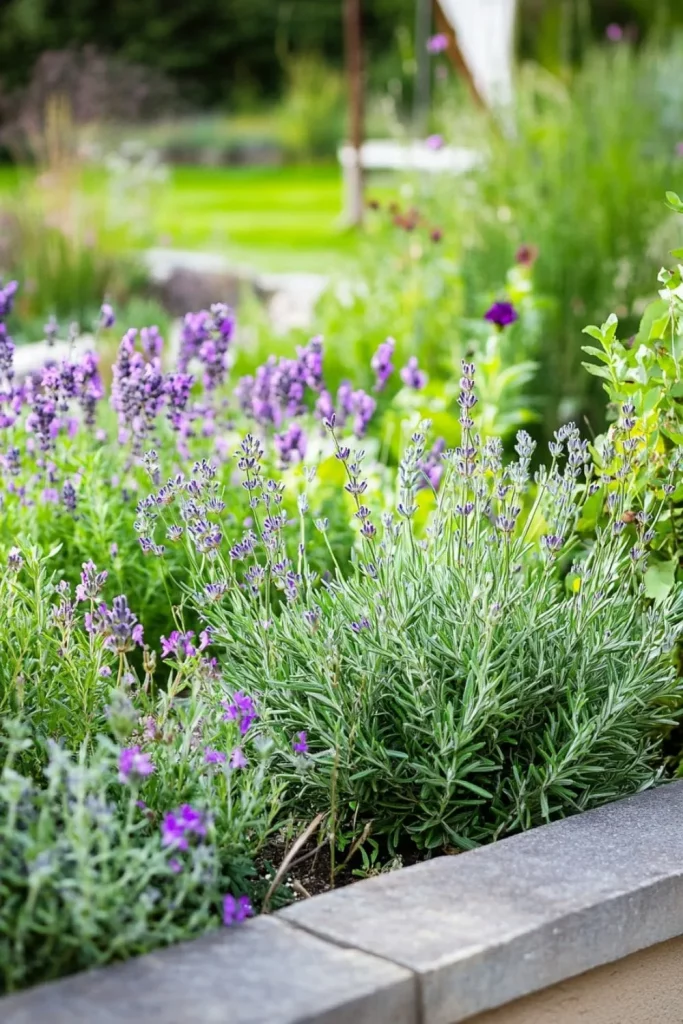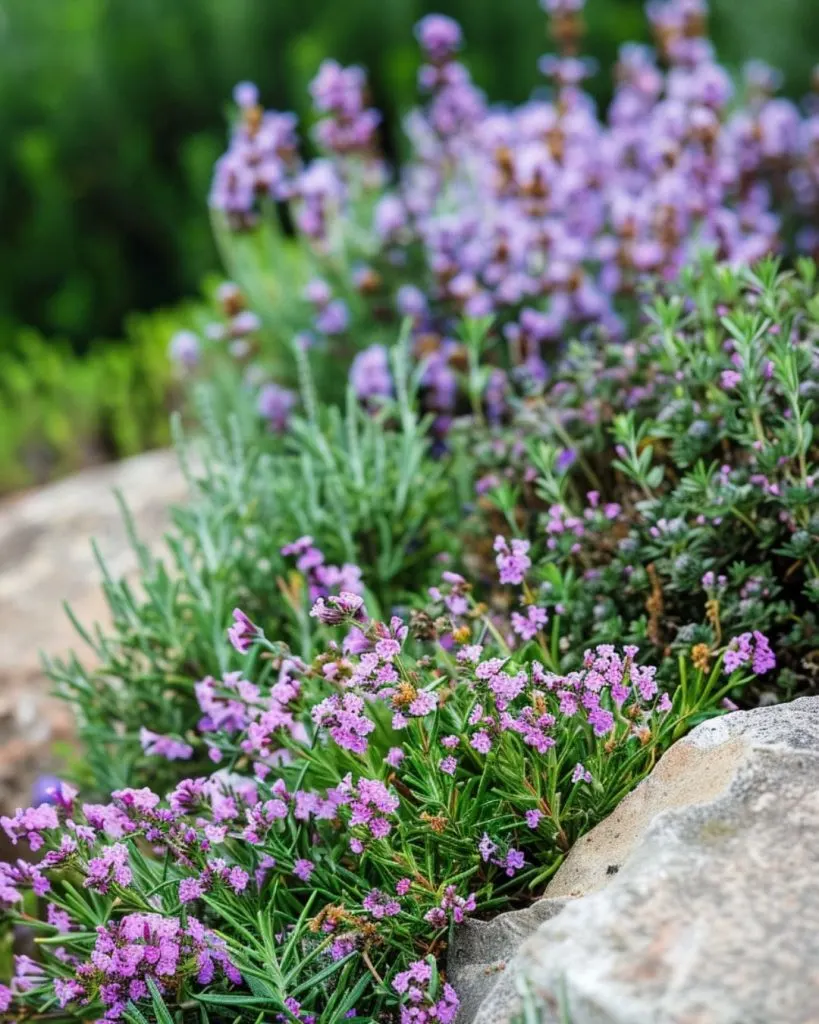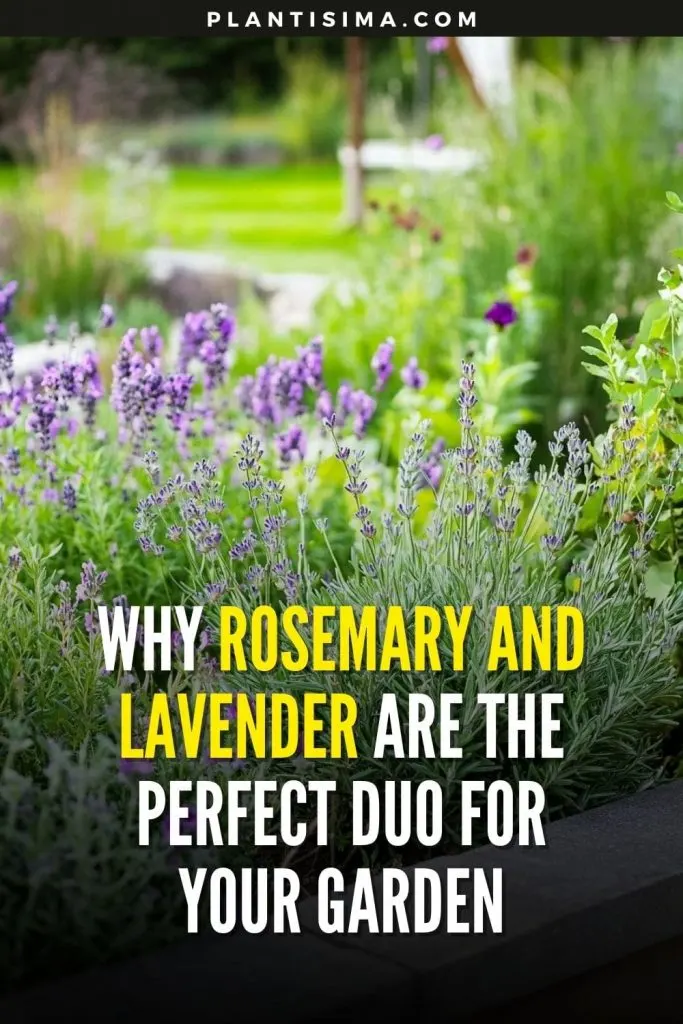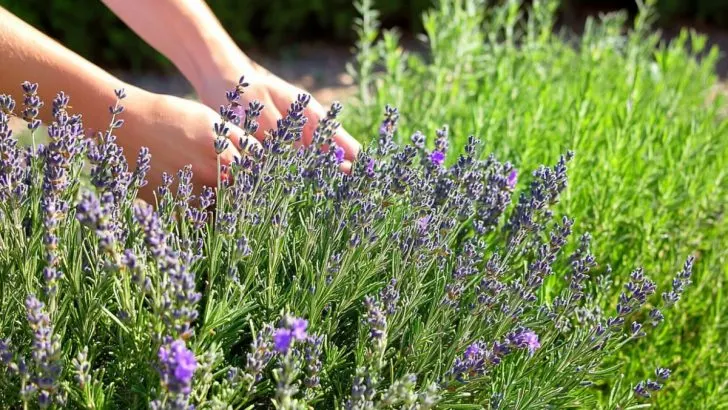The first reason rosemary and lavender get along so well is their similar growing requirements. Both thrive in well-drained, slightly alkaline soils, making them ideal companions. These plants are easy to care for, so with minimal effort, you can enjoy a flourishing garden bed.
Another reason to plant lavender and rosemary together is their captivating appearance. The needle-like leaves of rosemary and the purple blooms of lavender add a unique beauty to your outdoor space. Imagine a garden that not only looks stunning but also smells fantastic—every gardener’s dream!
But the story doesn’t end there. Both herbs are known for their pest-repellent properties. For instance, mosquitoes despise the scent of rosemary and lavender, so you won’t have to worry about these pesky insects during summer.
By planting rosemary and lavender in your garden, you’ll reduce pest populations and protect various plants. Plus, you’ll enjoy a more pleasant garden experience.
How to Plant Rosemary and Lavender

Now that you know the benefits, let’s dive into how you can plant these herbs side by side in your garden.
1. Choose the Right Location
The first step in planting lavender and rosemary is selecting an appropriate site. Remember, both plants thrive in sunny locations. Ensure your chosen spot receives plenty of sunlight throughout the day.
2. Prepare the Soil
Next, it’s time to prepare the planting substrate. As mentioned earlier, the soil must drain quickly. If your soil is compacted, improve its drainage by adding perlite or similar materials. Raised beds can also be a great solution, especially in areas with heavy rainfall.
Incorporating well-rotted compost will further enhance soil drainage, promote air circulation, and boost the nutrient content essential for healthy rosemary and lavender growth. Additionally, make sure the soil is slightly alkaline. I recommend conducting a soil test before planting these herbs to ensure optimal conditions.
3. Space the Plants Properly
The next step is to ensure both plants have enough space. Leave about 30-90 cm between the plants to prevent fungal infections. For lavender, a spacing of about 45 cm between individual plants is ideal.

When planting, gently remove the rosemary and lavender from their containers and place them in the prepared holes, ensuring they’re at the same depth as they were in the containers. Fill in the soil around the root balls, packing it well to eliminate air pockets. Water your newly planted herbs to help the soil settle properly.
How to Care for Rosemary and Lavender
To keep your rosemary and lavender healthy, I strongly recommend adding a layer of organic mulch, such as wood chips or straw, around your freshly planted herbs. Mulch helps retain soil moisture, suppress weed growth, and regulate soil temperature.
Monitor the watering schedule of rosemary and lavender; make sure the soil is dry before watering again, as both plants are prone to root rot if overwatered. Additionally, avoid over-fertilizing these herbs—they are accustomed to poor soils in their natural environments and don’t require frequent feeding.
Important Considerations

Rosemary and lavender can be used in many different ways, and planting them together allows them to reach their full potential. However, there are a few things to keep in mind when pairing these two plants.
First, lavender and rosemary may not always respond the same way to environmental conditions. For example, rosemary plants don’t tolerate cool temperatures well, making it difficult for them to thrive in harsh climates. To protect your rosemary from frost damage, apply a layer of mulch around the base of the plants.
Second, consider the size difference between the two plants. Rosemary grows into an upright shrub, whereas lavender has a bushy growth habit and doesn’t reach the same height. Overcrowding can be extremely dangerous, as lavender and rosemary may compete for sunlight, nutrients, and space.
Just follow the recommended spacing guidelines, and you’ll enjoy healthy, thriving rosemary and lavender. Now, all that’s left is to sit back and savor your aromatic and visually appealing garden.


